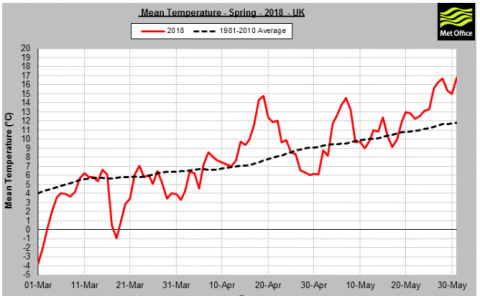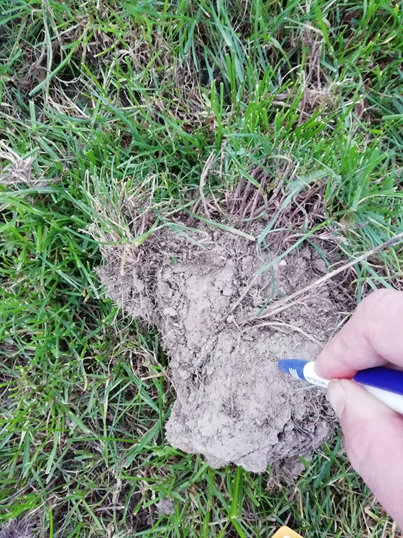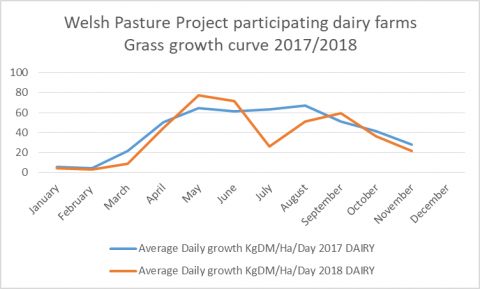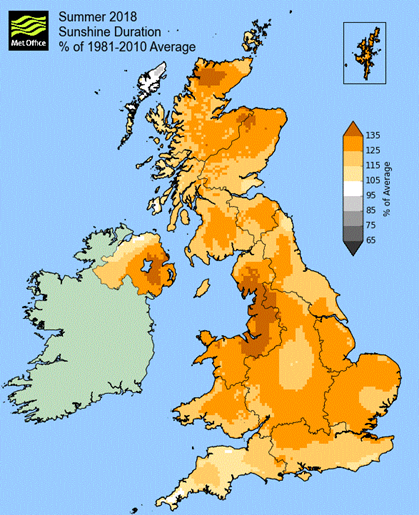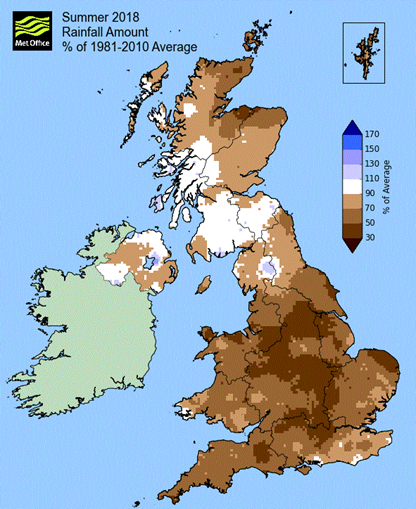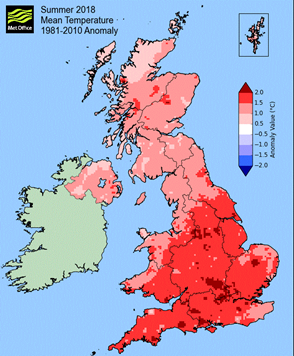17 December 2018
What can only be described as a rollercoaster of a year, 2018 proved to be one of the most challenging seasons in living memory with farmers and livestock being pushed to the extremes of grassland management. As the graph below shows, the year began with extreme wet and cold weather conditions that delayed turnout on even the earliest farms with low growth rates and stock being on – off grazed well into April. Growth rates even in sheltered and coastal areas struggled at around 2-3KgDM/Ha/Day. Finally when the weather settled and soils sufficiently warmed towards the end of April, grass began to grow properly with May growth proving extremely vigorous with growth rates of above 100KgDM/Ha/Day seen on some farms. Good first cuts were made in a settled period of weather well into June. This welcome dry and warm weather would soon evolve into an unwelcome enemy, as first cut aftermaths failed to recover and hillsides seared in the hot and dry weather, rainfall in many parts of eastern Wales would also be down 35% on previous years. Silage clamps were soon re-opened and trailer loads of hay and previous year’s surplus silage became a common site on trunk roads with many producers taking unprecedented decisions to buy fodder, cull or dry off cows during the months normally regarded as those of plenty.
Graph 1. Mean UK temperatures Spring 2018 compared to historical average
Met Office maps annexed below show how some areas of Wales have suffered more with drought compared to others. The north east of Wales did suffer considerably, with less rainfall and more hours of hot sunshine compared to areas of south west Wales. This reflected in poor growth rates and low average farm covers during July and August. When rain did finally fall properly in September, eastern areas continued to struggle, with project farms in Gwynedd and Pembrokeshire growing 50-60KgDM/Ha/day compared to farms in Denbighshire and Monmouthshire struggling between 20-30KgDM. On the ground this led to at least two weeks additional buffering of forage with grazed grass still only a minor portion of many diets.
Image 1. Example of dry clay soil (photo taken 23rd October)
However the upside on easterly farms was that even heavy ground would still be dry enough to keep animals out well into November as image 1 above shows one farm in Flintshire with clay soils, still bone dry and capable of absorbing much more moisture. Heavy clay ground will also have cracked and opened up due to the hot weather which will have remedied compaction caused by the wet spring. Grass has still grown well on most farms in November due to mild and moist conditions with the only limiting factor being day length. This will be welcomed as stock will have been kept out longer, saving on silage and slurry. Graph 2 below shows that back end growth this year was just as good as 2017, however dry conditions this year meant utilisation was much better with grazing and more late cuts of silage. Many cattle farmers will also have been impressed with the thickness of the well tillered re-growth of autumn swards, a legacy of tight summer grazing. At the same time, weeds such as chickweed and other ground spreading species, which have competed well in low grass covers would have been more prevalent than normal.
Graph 2. Grass growth curve on Dairy farms 2017/2018
And finally the winter will bring whatever winter brings, in an ideal world a kind, early spring would be very welcome especially if already limited forage stocks start to get stretched. Young farmers should take heart from the fact that 2018 extremes will help stand them in good stead for future years with the experiences faced and decisions they made, be the outcomes good or bad, will provide a firm backbone for the rest of their farming careers and will be remembered in years to come, fondly or un-fondly as their generation’s ‘1976’.
Measuring for the Welsh Pasture Project will begin again in February 2019
ANNEX (source: The Met Office)
Map 1. UK sunshine hours % of average Map 2. UK rainfall % of average Map 3. Mean temperatures compared to average

